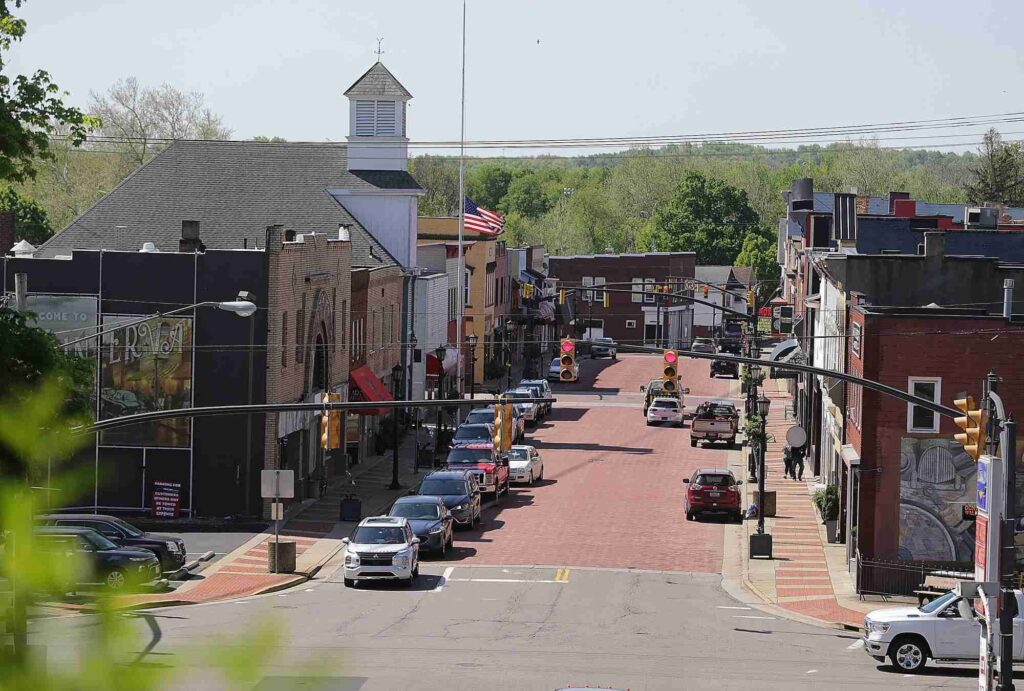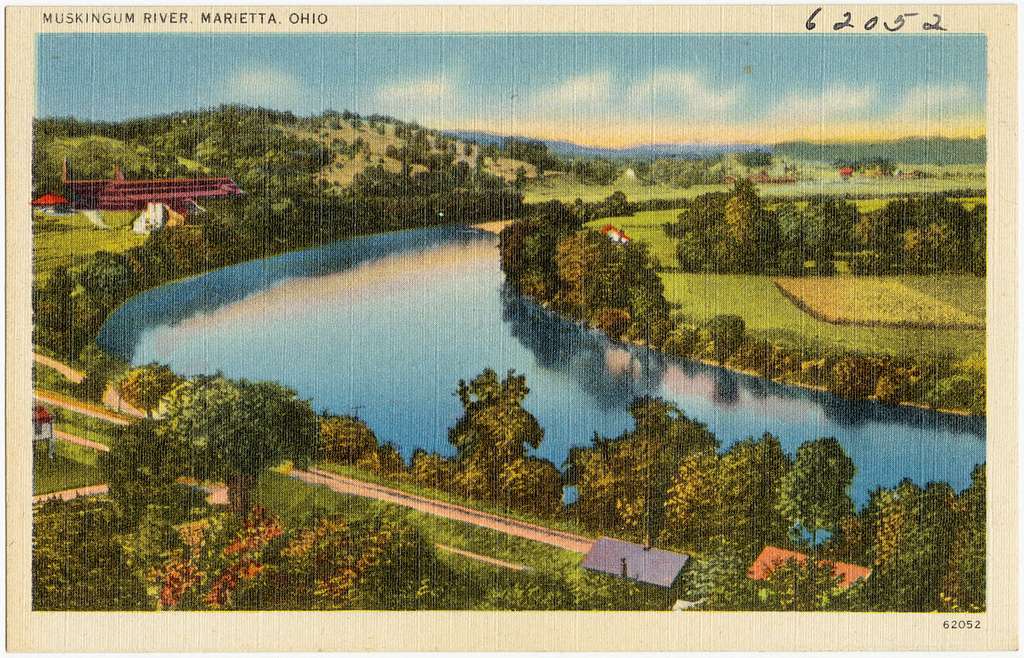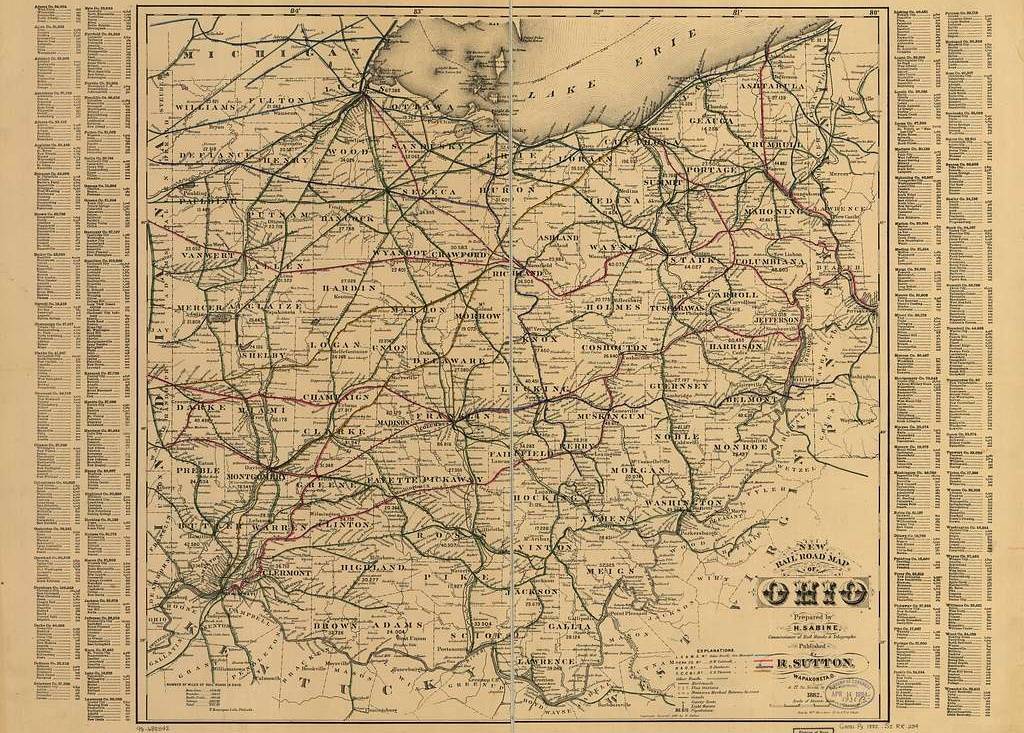According to some, there’s some lost French gold buried somewhere in Ohio.
How The French Lost Some Gold
This story begins not in Ohio, but in a land not-so-far away called New France (don’t worry, it wasn’t called that for long). At the time, The French and Indian War was about to lead into The Seven Years War and there was a bunch of crazy history stuff going on which isn’t really all that pertinent to this story. Anyway, the French had this big fort they called Fort Duquesne (today, we call it Pittsburgh), which they knew was no match for the approaching British Army, who wanted to force them out so they could take over. One of the big issues with this is that they had a bunch of gold at Fort Duquesne. Gold they really didn’t want the British to get their hands on. So, they had to come up with a plan.
Their goal was to move all that wealth to Fort Detroit, where they felt they could more easily defend it. Problem was it wasn’t going to be easy. Today, we might be able to make that drive in under five hours, but considering they were on horseback and the trails weren’t exactly paved – it was going to take a lot longer. Days, longer.
A group of about ten French guys set off with all that gold. They make it somewhere around eighty miles (it’s kind of hard to tell, exactly) when they realize that the British forces are getting too close. The Frenchmen knew that they were likely to see some trouble on this journey, so they had a plan for this scenario, too. The plan was to bury the gold somewhere safe, then leave some clues behind so that later on, you can find it again and the gold can once again be on its way to Fort Detroit.
The treasure was quickly buried and a few clues were planted – an odd rock burrowed into a tree, the picture of a deer carved into another one, stuff like that.
Before long, the British were there and said “We want your gold!” The french were like, “No, you can’t have it.” The British then said, “Give it to us or we’ll fart in your general direction!” The French said, “Nope. You still can’t have it and Sacre Bleu! That smells horrendous. What have you been eating?” as all but two of their group fell over from the stench. (Ok, what actually happened involves a lot of fighting, the French killing all but two of the British, both of whom refused to disclose where the gold was. In the end, both sides had to walk away empty handed.)
As far as we know, The French never went back for it … which means it very likely is still buried there.
But, Is This Story True?
The thing we have to ask at this point is whether or not this story is true … and most historians seem united that yes, in fact, it is. There are multiple forms of historical documentation that back this up (which we’ll get to in a moment). The other question then comes up is: Is the treasure still there? A lot of people seem to think it is – but will also admit there isn’t any proof.
In other words … If it is true that someone put that gold in the ground, then there are two possibilities. First, that it is still there. Second, that at some point in the last couple hundred years, someone dug it up.
The most logical treasure finders would, of course, be some Frenchman. After all, it was only two Frenchmen who knew exactly where it was buried, so there will always be that possibility. There are no surviving records that suggest the gold finally made it to Fort Detroit, however since not all records survived, that’s not saying that much. It’s also possible that if some French dude did dig it up, that he decided to keep it all for himself. Either way, we are also aware that many frenchmen stayed in the area for a rather long time and they continued looking for it. Likewise, British military men stayed in the area as well, and they, too, kept looking as well. Surely, if either side found anything, they would have stopped looking, right?
The Searching Begins
There is another curious story that takes place at some point in the 1830s. By now, the region is remarkably different. Ohio is now its own state and in one form or another, everything is now American (as opposed to French, British, Spanish, or whoever else wanted to call this land home). The Tuscarawas Trail that had connected Fort Duquesne and Fort Detroit was now one of the routes early Ohio settlers were using to get from place to place. Slowly, the area was developing. A few years prior, a man named John Whitacre purchased 128 acres of land and built a saw mill. He also helped create a town, Minerva, which he named after his newborn niece, Minerva Ann Taylor. But, it was another farmhouse practically next door where something strange was about to happen.
Mr. Evans operated a farm on what had been the Tuscarawas Trail and was known to rent one of his bedrooms for weary travelers. One such person was a young man from North Carolina. Usually travelers would spend only a night or two to rest up and continue their journey to wherever they were going, but this guy was different. He seemed to want the room a bit longer than just a night or two.
After a few days, Evans started to get curious. Every day, the guy would wake up in the morning and set off to do … something, only to return the following evening, get a good night’s sleep and then repeat the following day. What was odd, though, was that nobody in town seemed to see him. He didn’t go into the local store. He didn’t stop at the tavern for a pint or three. Naturally, the farmer wondered what this guy was up to, so he decided he’d follow the guy and see what was up.
For hours, the farmer followed the man and quickly discovered that all he did was walk around. A few times he stopped to sit on a rock, or stop and look at some trees or some flowers, but that was pretty much all the stranger was doing. The farmer knew that nobody came into the countryside and just looked around for no reason – something had to be going on. That night, he demanded an explanation from the stranger.
The man’s uncle had recently died and left everything he had to him. Part of that included a bunch of papers and notebooks that the guy had to sort through. While he was doing this, he found a journal his uncle had written, and in it he read a curious tale. One he felt he needed to immediately investigate.
The story in the journal told of how he, along with nine other men, had set out from Fort Duquesne with a massive amount of gold and silver, headed for Fort Detroit. Three days (or eighty miles) later, they reached a spot they called “Watertown”, not an official name, as the area probably didn’t have one, but called it so because they were in the middle of four mineral water springs. They learned British forces were almost upon them so they buried their goods in one spot and all their shovels in another place nearby. On the nearest tree, they carved a hole into the bark, just under where the main trunk forked off into two smaller branches, and placed an oddly-shaped rock in the hole. Approximately a mile or so east of the buried treasure they carved a deer into the side of another tree. On a third tree somewhere (his uncle didn’t say where, exactly) a beaver hat was carved.
Armed with this knowledge, the man was certain that he could find this lost gold and silver.
But, after several days of searching, he returned home, empty handed and defeated.
Minerva Searches Too
You can easily make the point that part of the reason the guy from North Carolina didn’t find the treasure his uncle buried was because he wasn’t all that familiar with the local geography. Another potential reason is the fact that geography tends to change over time, especially as early Ohio settlers began taking over the area. (Case in point, by the time he got there, there weren’t four springs, but three.)
If Mr. North Carolina didn’t know the local area, the town certainly did. And the thought of finding lost treasure was irresistible.
Again, we have to take a look at the effects of time. As I mentioned above, one of the four springs had dried up. Most of the other clues involved something carved or placed into a tree … and trees tend to grow quite a bit over a number of decades, growing over carvings and etchings.
Yet, it wouldn’t be long before townsfolk began telling how they located the clues. For example, a farmer claimed that when he had chopped down a tree, some bark fell off and an odd tool-like rock thing fell out from the area where the trunk forks. Another resident said they peeled some bark off a tree and discovered what looked like a carving of a deer. Both these coincided with the story of where they should be found. So, people want to believe it.
Perhaps the most unusual “find” came from a local resident who cooked some chicken for dinner. After the cooking was done, they carved into the bird and hit metal – a gold coin. Of French origin.
Let’s Search For Treasure Today
There are those who say that the lost treasure is still there, today. There are also those who say that Mr. North Carolina actually did find the treasure and took it back with him. And there are those who seem to think that various other people found the treasure at various periods in history – but the bottom line is that nobody knows for sure. Is it possible the treasure is still out there, somewhere? Well … yes, it is possible…
This brings up the next logical question: Should you go looking for it? That question is a bit harder to answer.
First off, all the property you’ll be searching through is private property … and the owners of said property might not appreciate you showing up with shovels or excavators or metal detectors or whatever tools you happen to have on you at the time. However, rumor has it that the guy who owns the land that many people believe to be the burial site encourages people to search, however he wants to meet searchers first, and he wants them to sign a legal document saying that you’ll split the treasure with him Fifty-Fifty.
That being said – maybe the Minerva, Ohio area might be a great place to explore, anyway.
Beyond being the site where some french gold and silver coins were (most likely) buried, the place has a few other points of interest. For example, this is where a few famous people are from, including John Cowan, the bassist for The Doobie Brothers; poet Ralph Hodgson, A. J. Trauth, known for playing Alan on Even Stevens (ask a kid); and … I don’t know … William McKinley, other wise known as The President of the United States of America No. 25. (Technically the presidents farm is on SR-30 between Minerva and Bayard, but he was known to frequently visit Minerva and townsfolk seemed to remember him kindly. Still, it’s odd that not even a street between the two bear his name. Oh-well.)
Other places worth possibly checking out include the Haas Museum, the Hart Mansion, the Roxy Theater, or maybe even the spots where Bigfoot had been spotted (or, maybe not).



